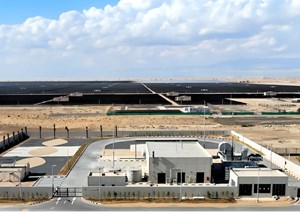News
The green H2 project supports DEWA’s efforts to reach net zero by 2050
The race towards net zero is accelerating globally, increasing the demand for clean and renewable energy sources. In this context, the H2 industry is gearing up for a major boom, opening up unprecedented opportunities to contribute to a more sustainable planet. H2, especially green H2, is one of the fuels that have the ability to decarbonize various sectors.
There are many pioneering innovations being developed in H2 technology, especially the electrolysis of water to produce green H2, which some describe as the fuel of the future, using renewable energy. Additionally, advancements in H2 production from biomass and waste, as well as other new methods for generating H2 from natural gas with low carbon emissions, align with the global transformation in the energy sector and the increasing reliance on clean and renewable energy sources such as solar and hydroelectric energy.
The major challenges facing today's H2 production methods include cost competitiveness, as current H2 production, especially from renewable sources, is generally more expensive than traditional fossil fuel-based methods. Some H2 production technologies, such as advanced electrolysis or biomass pyrolysis, are still in the research and development stage, requiring further technological progress, as the scalability of these technologies is essential for large-scale commercial use.
According to recent reports, green H2 could be produced for $1.60 per kilogram by 2030, making it more competitive with current production methods, whose current cost ranges between $3 and $6.5 per kilogram. In terms of storage, advanced technologies such as H2 liquefaction, salt cavern storage, and innovative solid H2 storage materials are being developed, ensuring efficient and reliable H2 storage. These developments are crucial to enabling widespread adoption of green H2 as an energy carrier. Numbers and forecasts underscore the growing importance of green H2, with significant investments and technological advances driving its rapid development and deployment.
The green H2 project implemented by Dubai Electricity and Water Authority (DEWA) at the Mohammed bin Rashid Al Maktoum Solar Park is the first project of its kind in the Middle East and North Africa to produce H2 using solar power, and the H2 gas tank can store up to 12 hours of H2 produced from solar power. Since the launch of the green H2 project in May 2021, the facility has fully achieved its production goals, producing approximately 20 kilograms per hour of high-purity green H2. The project, which produces green H2 primarily by electrolysis of water using renewable energy, will accommodate future applications and testing platforms for various uses of H2, including energy production and mobility. This is in line with the roadmap for H2 strategy that will be implemented in phases.
The project supports the Dubai Net Zero Carbon Emissions Strategy 2050 to provide 100% of the energy production capacity from clean energy sources by 2050. DEWA plays a leading role in realizing this ambition through pioneering clean and renewable energy projects. The most notable of these is the Mohammed bin Rashid Al Maktoum Solar Park, the largest single-site solar park in the world, based on the Independent Power Producer (IPP) model, with a planned production capacity of 5,000 MW by 2030. The solar park has total investments of AED 50 billion, and its current production capacity in 2,860 MW. DEWA has won the H2 Project of the Year 2023 Award for its green H2 project. This was part of the H2 Future Awards 2023, organized during the ‘Connecting Green H2 MENA’ (CGHM2023) conference in Dubai.


